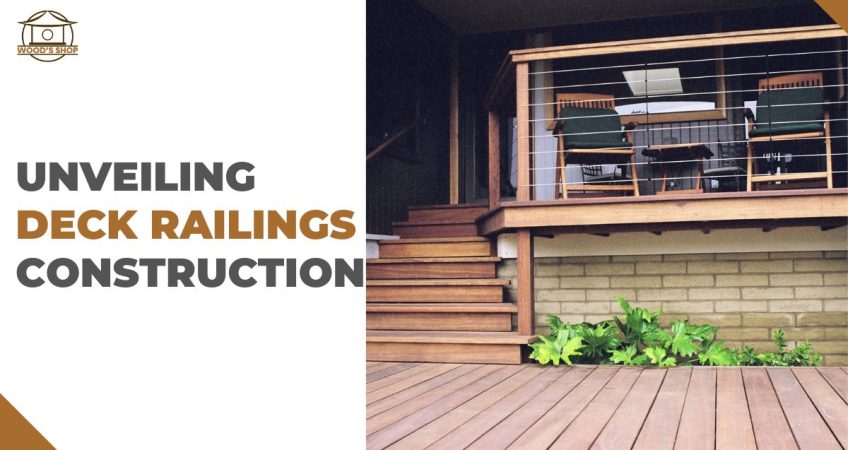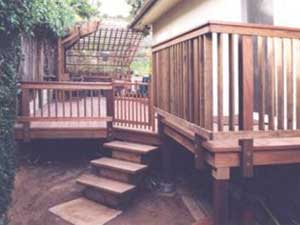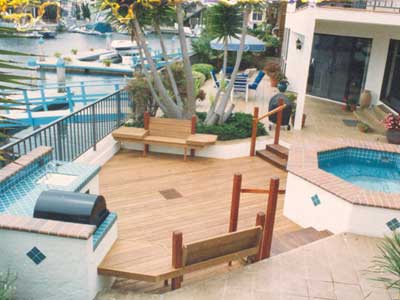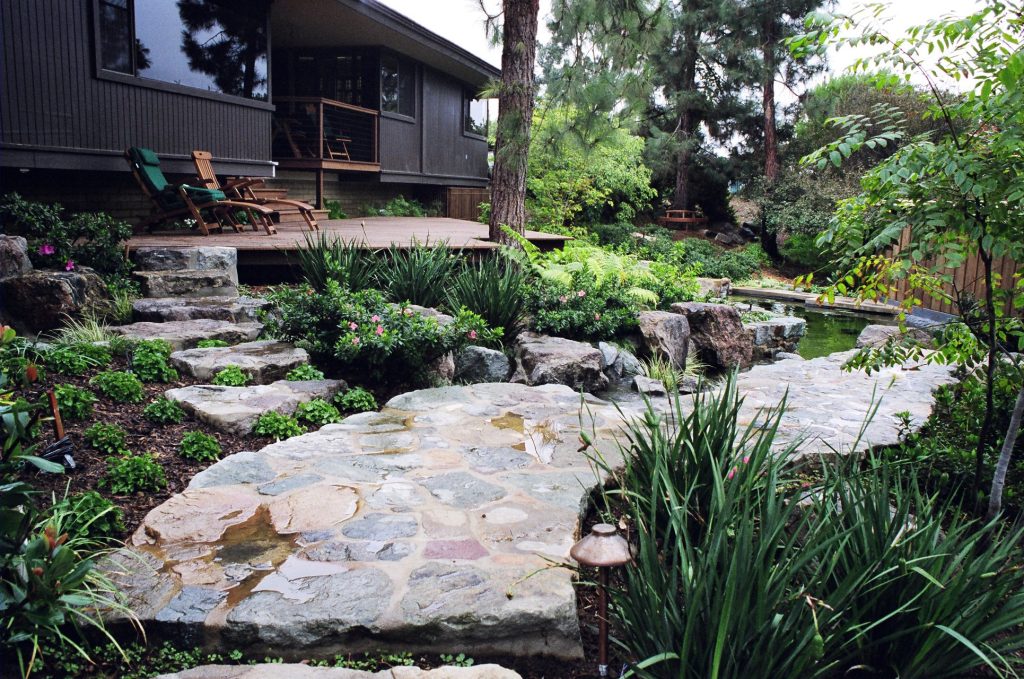Constructing Your Deck Railing: A Step-by-Step DIY Guide

Deck railings are much more than just a safety feature. They can be the crowning glory of your outdoor living space, offering both aesthetic appeal and a robust barrier to ensure everyone’s safety. When it comes to deck railings, it’s all about finding the perfect balance between style and function. And the best part? You can construct them yourself!
By following our step-by-step DIY guide, you’ll be able to create a sturdy, eye-catching railing that will enhance your deck’s look and longevity. So, get ready to roll up your sleeves and transform your deck into a masterpiece. Let’s get started!
Understanding Deck Railing Construction
Before diving into the construction, it’s paramount to grasp the fundamentals of deck railing construction. This section will shed light on the basic principles and components involved, setting a strong foundation for your DIY project.
Different Materials for Deck Railings: Pros and Cons
When choosing the material for your deck railing, it’s essential to weigh the pros and cons of each option. A popular choice is wood due to its natural aesthetic and versatility, but it requires regular maintenance to prevent decay and weather damage. Alternatively, vinyl railings offer durability and low maintenance, though they may not provide the same classic look as wood.
Metal railings, including aluminum and steel, offer strength and sleek modern aesthetics but can be more expensive. Finally, composite materials, a mixture of wood and plastic, balance aesthetics, durability, and minimal maintenance but can be costlier than plain wood.
Building Codes and Regulations to Follow for Deck Railings
Compliance with local building codes and regulations is not optional but mandatory when constructing your deck railing. These rules dictate aspects such as railing height, baluster spacing, and load capacity to ensure safety. Always consult your local building department before you start your project to avoid costly mistakes or the need to rebuild.
Design Considerations for Deck Railing Construction
While functionality and safety are paramount in deck railing construction, don’t overlook the power of design. Your railing should complement your home’s architectural style and the surrounding landscape. Consider aspects such as color, material, and baluster shape. Remember, your deck is an extension of your home, so aim for a design that flows seamlessly with the rest of your property.
Read More: Moon Gate Builder’s Guide
Step-by-Step Guide for Deck Railing Construction
Preparing the Deck Area and Assessing the Structure is the first step. Clear the area around your deck to provide enough space for working. Evaluate the condition of your deck to ensure the structure can support the new railing. Look for any signs of decay, loose boards, or other potential issues that need addressing before proceeding.
Next, Choosing the Right Materials and Tools is crucial. Select the material that best suits your needs in terms of aesthetics, durability, and maintenance. Don’t forget to have all the necessary tools at hand, such as saws, drills, screws, and measuring tapes.

The third step involves Installing the Posts and Balusters. Mount your posts securely to the deck’s frame, maintaining uniform spacing between them. The balusters should be evenly spaced and firmly attached to the top and bottom rails to ensure stability and safety.
The final step, Adding Finishing Touches for Enhanced Durability and Appeal, improves the lifespan and look of your deck railing. Apply a protective coat to prevent weather-related damage and consider adding aesthetic touches like post caps or decorative balusters to enhance your deck’s appeal.
Maintenance and Upkeep of Deck Railings
Regular maintenance is key to prolonging the lifespan of your deck railings. It includes cleaning off any dirt, mold, or mildew that can contribute to decay. If your railings are wooden, consider resealing them every couple of years to protect against moisture and sun damage. For metal railings, look for signs of rust or chipping paint that may need attention.
Seasonal care is also essential for deck railing safety. Before the start of each season, inspect your railings for any loose parts, decay, or other damage. In winter, make sure to clear off any snow or ice build-up that could weaken your railing or make your deck slippery. In the summer, consider adding a sun-protective coat to prevent any weather-related damage. Regular inspections and upkeep not only enhance the safety of your deck but also increase its aesthetic appeal and overall lifespan.
Deck Railing Design Inspirations and Trends
Deck railing design has evolved significantly over the years, moving beyond its functional purpose of safety and morphing into an integral part of a deck’s overall aesthetic. Incorporating modern aesthetics into deck railing designs is a current trend that adds a sleek, contemporary feel to your outdoor space. Consider materials like cable or glass that maintain an open view while still providing safety and durability.

Balancing functionality with visual appeal is a key principle in current deck railing design. While the primary purpose of railings is to provide safety, they can also greatly contribute to the visual appeal of your deck. For example, intricate wrought-iron railings can give a traditional home a sense of elegance, while sleek cable railings can complement a modern home’s clean lines. Choose a railing design that not only meets your safety needs but also aligns with your home’s architectural style and your personal taste.
Read More: DIY Pergola Kits: Enhance Your Outdoor Space with Ease
Conclusion
In conclusion, deck railings are more than a safety measure; they are an integral part of your home’s overall aesthetic. The key is to balance functionality and visual appeal, taking into consideration modern aesthetics, durability, and your personal style preference. From using materials like cable or glass for a contemporary feel, to intricate wrought-iron railings for a traditional elegance, there’s a vast variety of options available to enhance your outdoor space.
Remember, regular maintenance and inspection are equally crucial in ensuring the longevity and safety of your deck railings. Ready to transform your deck? Let Wood’s Shop help guide you in creating a deck space that’s both durable and appealing. Trust us to bring your visions to life, one railing at a time.
FAQs
Q1. What are the primary purposes of deck railings?
Deck railings primarily serve a safety function, but they also play a significant role in the aesthetic appeal of your home. They can complement your home’s architectural style and add a touch of personal taste to your outdoor space.
Q2. How can I choose the right material for my deck railings?
The choice of material for deck railings depends on the look and feel you want to achieve. For a modern, sleek look, consider materials like cable or glass. If you prefer a traditional, elegant flavor, intricate wrought-iron railings can be a great choice. Always consider the durability and safety of the materials you choose.
Q3. Are deck railings only a safety measure?
No, deck railings are more than a safety measure. They contribute significantly to the overall aesthetic and feel of your home. Balancing functionality and visual appeal is the key to choosing the right deck railings.
Q4. What is the importance of regular maintenance and inspection of deck railings?
Regular maintenance and inspection are crucial for the longevity and safety of your deck railings. They help in early detection of any potential issues and ensure your railings stay in good condition for a longer time.